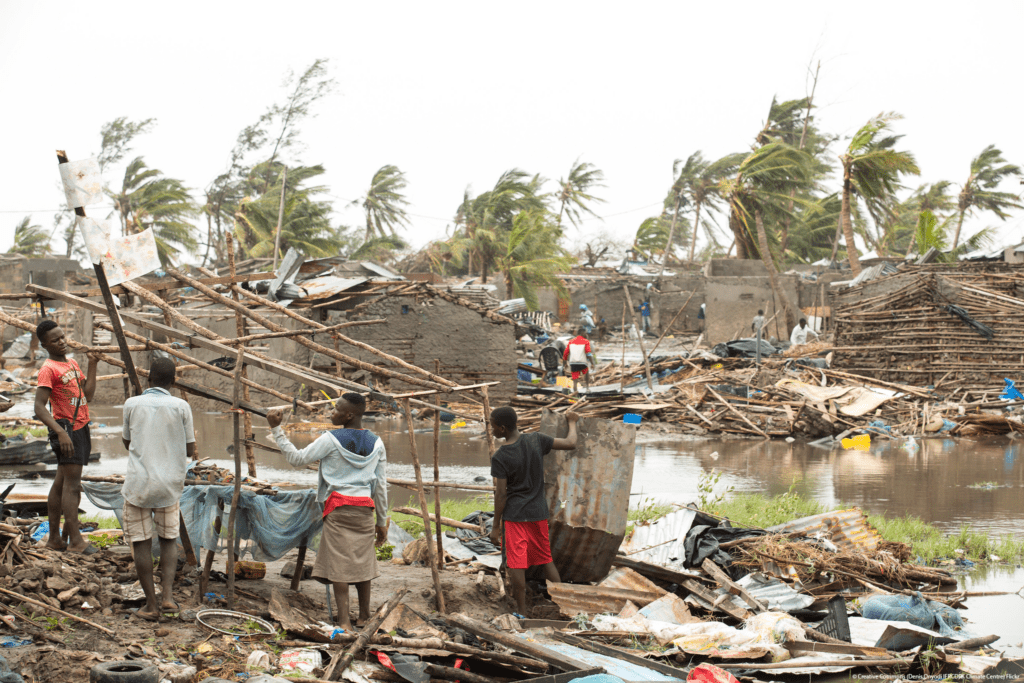Climate change is increasing the frequency, scale and impact of disasters. Countries with the most economically deprived and vulnerable communities are most affected by climate-related disaster — and yet receive only a fraction of the funding they need to prepare for extreme weather events and adapt to long-term climate change. Much can be done to reduce risks and impact and prevent climate-related extreme weather events turning into humanitarian disasters.
These are just some conclusions of timely research from the International Federation of Red Cross and Red Crescent Societies. Its 2020 World Disaster report finds that the number of climate and weather-related disasters per decade has increased nearly 35 per cent since the 1990s. In the six months since the COVID-19 pandemic began, more than 100 disasters took place, affecting more than 50 million people.
At WWF, we have been warning of the growing impact that climate change and environment degradation are having on human disaster risk for some years. There is an urgent need to build resilience to this growing threat among vulnerable communities — people who are the least able to manage disaster impacts, and who have done the least to contribute to climate change.
But there is also a need to better integrate climate and environmental risk awareness into disaster management. For example, a failure to do so can lead to communities being relocated from a devastated coastal region onto a seasonal flood plain, or into the path of an elephant migration route, for example.
Moving too fast to clean up debris and placing it along shorelines can unintentionally create risk for local people who depend upon the coastal vegetation for their livelihoods. Rushing to procure building materials can lead to excessive exploitation of local resources including timber, sand and clay, increasing the risk of soil erosion, landslides and future flooding.
 Cyclone Idai displaced millions of people as it passed through Mozambique in March 2019.
Cyclone Idai displaced millions of people as it passed through Mozambique in March 2019.
Rebuilding with nature
Conversely, recovery plans that work with nature rather than against it can help build resilience for both people and ecosystems and can reduce the risk of future hazards becoming future disasters.
For example, recovery and reconstruction should reuse, repurpose and recycle debris, providing a resource for rebuilding roads and buildings, reducing the demand for extraction of local building materials. Vegetative material can be recycled into compost, mulch and landfill cover, helping to support agricultural livelihoods and family food security. Rebuilding agriculture, fisheries and aquaculture livelihoods using better management practices can reduce waste and minimize the need for fertilizer and pesticides, helping farmers and fishers to save money and reduce pollution.
Disaster response can help communities build back safer and greener, using 21st century technology and infrastructure to improve the quality of life of affected communities while simultaneously improving resilience potential. For example, microgrids can provide decentralized, low-carbon power that is more flexible and disaster-proof than traditional grid-supplied electricity
As the report articulates, there is an urgent need to build human capacity within the humanitarian community. Individuals need to be trained to recognize environmental and climate risks to which disaster-hit communities are exposed, and to better understand how to plan climate-resilient reconstruction.
We were proud to have been awarded, along with our Red Cross partner, the 2013 UN Green Star Award for our work developing the Green Recovery and Reconstruction: A Training Toolkit for Humanitarian Aid, which shares our five-year collaboration approach to tsunami recovery and reconstruction. Building upon these experiences, and looking forward to future potential, we strongly endorse the recommendations of the World Disaster report calling for a scaling up of environmental training and capacity building for humanitarians.
There has been much progress over the last 10 years on integrating the environment and climate into humanitarian action, but much more work lies ahead for us all.
Anita van Breda is Senior Director, Environment and Disaster Management at WWF-US.
